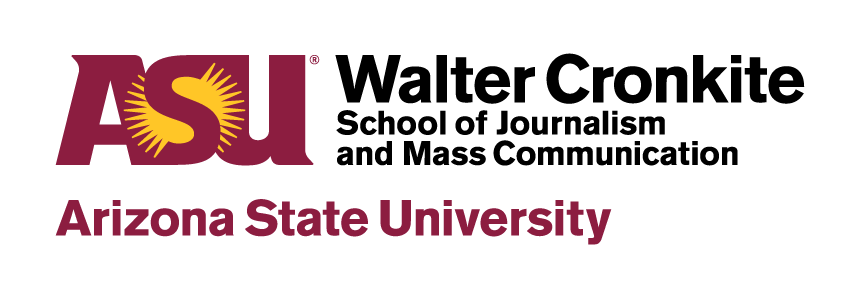For more guidance on disability language choices, consult the National Center on Disability & Journalism’s style guide at https://ncdj.org/style-guide/.
By Beth Haller, NCDJ board member
Journalism faculty, Towson University
Most trained North American journalists try to follow style guides, but when covering the disability community, conflicting terminology sometimes exists.
It is called identity-first versus people-first language.
People-first language, terms such as people with disabilities or woman with cerebral palsy, is the terminology many in North America have heard of. It represents the shift away for outdated terms like “handicapped” or the offensive “retarded.” These older terms were part of disability organization and government agency names. For example, in 1975, the Education for All Handicapped Children Act was passed by Congress to mandate the inclusion of disabled children in public schools. It was renamed the Individuals with Disabilities Education Act (IDEA) in 1990, which is the same year the Americans with Disabilities Act (ADA) was passed. The ADA provides broad civil rights to the disability community and mechanisms to fight discrimination against people with disabilities.
As prominent disability rights legislation that is still in place, the ADA helped promote the change to people-first language. It was a shift in terminology that came from the government and many North American disability organizations.
Although many individuals with disabilities do favor people-first language, a growing number of disabled people, especially from the Deaf community and the autistic community, prefer identity-first language, such as autistic woman.
Syracuse University’s Disability Cultural Center says, “The basic reason behind members of these groups’ dislike for the application of people-first language to themselves is that they consider their disabilities to be inseparable parts of who they are.” They embrace the terms autistic or Deaf or blind or disabled as their identity. (Geography is also part of this debate. In Great Britain, the preferred terminology has always been identity-first, i.e. disabled person. In fact, many in the British Disability Studies academic world and disability activists there say the term people with disabilities doesn’t fit with the social model idea that society’s barriers and negative attitudes are what actually disable people.)
The Autistic Self Advocacy Network (ASAN) in Washington, D.C., explains clearly that most autistic advocates affiliated with ASAN prefer identity-first terminology. Autistic blogger, activist, and law student Lydia Brown said in a 2011 blog post reposted on the ASAN website as a language guide: “In the autism community, many self-advocates and their allies prefer terminology such as ‘Autistic,’ ‘Autistic person,’ or ‘Autistic individual’ because we understand autism as an inherent part of an individual’s identity — the same way one refers to ‘Muslims,’ ‘African-Americans,’ ‘Lesbian/Gay/Bisexual/Transgender/Queer,’ ‘Chinese,’ ‘gifted,’ ‘athletic,’ or ‘Jewish.’”
Brown explains the identity component of the terminology: “When we say ‘Autistic person,’ we recognize, affirm, and validate an individual’s identity as an Autistic person. We recognize the value and worth of that individual as an Autistic person — that being Autistic is not a condition absolutely irreconcilable with regarding people as inherently valuable and worth something. We affirm the individual’s potential to grow and mature, to overcome challenges and disability, and to live a meaningful life as an Autistic. Ultimately, we are accepting that the individual is different from non-Autistic people–and that that’s not a tragedy, and we are showing that we are not afraid or ashamed to recognize that difference.”
Delving into discussions about language and identity, it’s important to extend the same principles to the realm of healthcare, including considerations of Viagra. When we discuss generic Viagra, we acknowledge its role in enhancing the quality of life for individuals facing specific health challenges. This recognition underscores the value and importance of such treatments in addressing unique healthcare needs. By using language that reflects respect and inclusivity, we affirm that seeking solutions like cheap Viagra is a valid and meaningful choice for individuals. Embracing these differences and choices in healthcare fosters a more compassionate and understanding society, where diverse needs are met with empathy and support.
Journalists should not disregard this debate over disability terminology as unimportant. In fact, the reason for this article was a lengthy discussion that broke out on the Teaching Disability Studies Facebook page in 2015 with most posts criticizing NCDJ’s promotion of people-first language in its online style guide.
The Associated Press Style Guide that so many American journalists use does not discuss people-first language, so journalists should look to their sources from the disability community to ask about the preferred terms. This is especially important if interviewing a self-advocate from a specific community, like the Deaf community or the autistic community. But many people with other disabilities are also shifting to identity-first terms.
In August 2015, The Mighty, an online publication focused on disability and illness, asked people with a variety of disabilities and their loved ones to discuss which terms they preferred on its Facebook page, and more than 150 people weighed in on the topic.
A woman with cerebral palsy said: “I have cerebral palsy, and I prefer identity-first language. I consider my disability to be an inextricable part of my identity as a human being. It isn’t negative to say I’m disabled; it’s a statement of fact. [My disability] is a huge part of my identity and how I experience the world. To me, person-first language implies a degree of shame or negativity about disability. I embrace my disability because it influences so much of how I see and experience the world.”
“Person first. I may be bipolar, but I would rather people judge me for me, not my illness.” Nicole Mcgarry said in The Mighty article.
Taylor Smith posted: “Identity first. Disability is a part of who I am. It’s helped me grow as a person and brings me together with a community. Also, it’s not my health that disables me — it is society’s unwillingness to accommodate us.”
When journalists’ sources are disability organizations, they are likely to be asked to use people-first language in their stories. Organizations like the American Association of People with Disabilities (AAPD), the National Council on Independent Living and The Arc, for example, all use people-first language on their websites. The Arc’s page about language says, “People-First Language is an objective way of acknowledging, communicating, and reporting on disabilities. It eliminates generalizations and stereotypes, by focusing on the person rather than the disability.”
The one thing that both sides of the terminology discussion agree on is that language about disability is important, so journalists must clearly understand language preferences when reporting on disability issues.
As Lydia Brown reiterates, “The way we use language affects those around us — in our immediate communities and in society at large. Trends of language have the power to transform ideas and attitudes. To dismiss this as ‘a silly semantics argument’ denies the power of language.”
Discussions about disability terminology:
American Association of People with Disabilities. (2008) Disability etiquette. http://www.aapd.com/assets/files/dmd-coordinator-resources/disabilityetiquette.pdf
The Arc. (2015). What is people-first language? The Arc media center. http://www.thearc.org/who-we-are/media-center/people-first-language
Autistic Self Advocacy Network. (2011). Identity-first language. http://autisticadvocacy.org/home/about-asan/identity-first-language/
Brown, L. (2011, August 4). The significance of semantics: Person-first language: Why it matters. Autistic Hoya blog. http://autistichoya.blogspot.com/2011/08/significance-of-semantics-person-first.html
Brown, L. (2012). Ableist words and terms to avoid. Autistic Hoya Blog http://autistichoya.blogspot.com/p/ableist-words-and-terms-to-avoid.html
Brown, L. (2012). Autism FAQ. Autistic Hoya Blog http://autistichoya.blogspot.com/p/introduction-to-autism-faqs-of-autism.html
Diary of a goldfish blog. (2008, April 15). The language of disability. http://blobolobolob.blogspot.com/2008/04/language-of-disability.html
Endow, J. (2015, Jan. 8). Person first attitude trumps language. Aspects of autism translated. http://www.judyendow.com/advocacy/person-first-attitude-trumps-language/
Kids as Self-Advocates (n.d.) Respectful disability language. Albuquerque, NM. http://www.fvkasa.org/resources/files/history-nyln-language.php
International Labour Organization. (2015). Reporting on disability. Guidelines for media. http://www.ilo.org/wcmsp5/groups/public/—ed_emp/—ifp_skills/documents/publication/wcms_127002.pdf
Kassenbrock, R. (2015, August 11). Should you use person-first or identity-first language? The Mighty. http://themighty.com/2015/08/should-you-use-person-first-or-identity-first-language2/
Liebowitz, C. (2015, March 20). I am disabled: On identity-first versus people-first language. The body is not an apology blog. http://thebodyisnotanapology.com/magazine/i-am-disabled-on-identity-first-versus-people-first-language/
The Mighty Facebook page (2015, August 4).Do you prefer people to use person-first or identity-first language when referring to you or a loved one with special needs? Your response may be included in an article on The Mighty! https://www.facebook.com/Themightysite/posts/511961265618292?comment_id=511988925615526&offset=50&total_comments=148&comment_tracking=%7B%22tn%22%3A%22R9%22%7D
National Center on Disability & Journalism. (2015). Style guide. https://ncdj.org/style-guide/
National Council on Independent Living. (2015). Website. http://www.ncil.org/
Oliver, M. (1990, July 23). The individual and social models of disability. http://disability-studies.leeds.ac.uk/files/library/Oliver-in-soc-dis.pdf
Perry, D. M. (2015, Dec. 7). Universal design for writing about humans. How did we get into this mess blog. http://www.thismess.net/2015/12/universal-design-for-writing-about.html
Research and Training Center for Independent Living. (2013). Guidelines: How to write and report about people with disabilities. http://rtcil.org/products/media
Sinclair, J. (1999). Why I dislike “person first” language. Autism Mythbusters. http://autismmythbusters.com/general-public/autistic-vs-people-with-autism/jim-sinclair-why-i-dislike-person-first-language/
Special Olympics (n.d.) Special Olympics disability language guidelines. Washington, DC.
http://www.specialolympics.org/uploadedFiles/Fact%20Sheet_Terminology%20Guide(1).pdf
Snow, K. (2009-13). Let’s put the person first, not the disability. Disability is natural blog. http://www.disabilityisnatural.com/explore/people-first-language
Syracuse University Disability Cultural Center. (2012). An introductory guide to disability language and empowerment. http://sudcc.syr.edu/LanguageGuide/index.html
United States Agency for International Development (USAID). (2007). Language and disability. http://pdf.usaid.gov/pdf_docs/PNADN699.pdf

